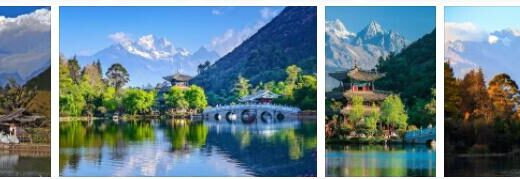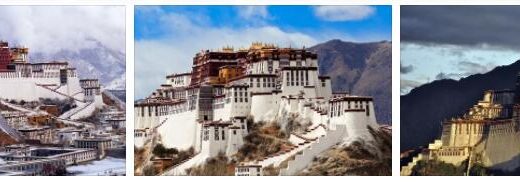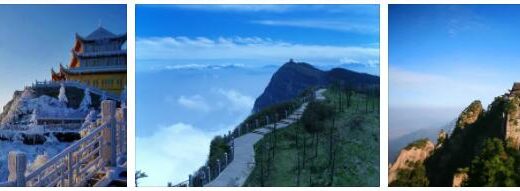World Heritages in China Part 3
Koguryŏ Ruins (World Heritage)
Three old, not yet fully excavated cities of the Koguryŏ culture and 40 graves are protected. The Koguryŏ kingdom probably existed from 37 BC. BC to AD 668 in northern China and in the northern part of the Korean peninsula. In 427 the capital was moved to Pyongyang, and the kingdom was destroyed in the 7th century.
Koguryŏ Ruins: Facts
| Official title: | Ruins of the former capitals and tombs of the ancient kingdom of Koguryŏ |
| Cultural monument: | Three old, only partially excavated former cities – Wunu Mountain City, Wandu Mountain City, Guonei City – as well as 40 graves from the Koguryŏ culture, one of the “Three Kingdoms” of the early Korean period (rule from 277 BC to 688 AD BC in parts of northern China and in the northern half of the Korean peninsula) decorated with fine wall paintings |
| Continent: | Asia |
| Country: | China |
| Location: | Ji’an in northeast China’s Jilin Province |
| Appointment: | 2004 |
| Meaning: | Testimony to the Koguryŏ culture |
Sichuan Panda Reserve (World Heritage)
The reserves in Sichuan protect nearly a third of the world’s panda population. According to dentistrymyth, it is estimated that around 1,600 pandas still live in the wild in China, mainly in the provinces of Sichuan, Shaanxi and Gansu.
Sichuan Panda Reserve: Facts
| Official title: | Panda Nature Reserve in Sichuan |
| Natural monument: | Protected and breeding area (9,245 km²) for the giant panda in the Qionglai and Jiajin Mountains in central China; largest closed habitat of this bear species, housing approx. 30% of the world’s free living population there; seven separate nature reserves and nine landscape parks; Habitat for other endangered animal species and for the most diverse flora outside of tropical rainforests |
| Continent: | Asia |
| Country: | China |
| Location: | 100 km west of Chengdu, Sichuan Province, south-central China |
| Appointment: | 2006 |
| Meaning: | Most important habitat for the threatened species of the giant panda; outstanding scenic diversity; one of the richest vegetations outside of the tropical rainforests with a large stock of medicinal plants |
| Flora and fauna: | 542 vertebrate species, including 109 mammal species; approx. 1,700 insect species, 365 bird species (300 of which breed locally) as well as 731 butterfly and 32 reptile species; between 5,000 and 6,000 plant species from over 1,000 genera, including 4,000 flowering plants; around 500 giant pandas, other endangered animal species, including red panda, snow leopard, clouded leopard |
Mount Wutai (World Heritage)
The Wutai Shan in the northeast of the Shanxi province is one of the four holy mountains of the Buddhists with its five peaks next to the Emei Shan, the Putuo Shan and the Jiuhua Shan. The over 100 km long mountain range rises to an altitude of 3058 m. There are numerous monasteries and temples, especially around Taihuai, such as B. the Foguang and the Nanchan temples.
Mount Wutai: facts
| Official title: | Mount Wutai |
| Cultural monument: | Highest point of the Wutaishan mountain range in northern China (3,058 m) in the northeastern part of the highlands of Shanxi and one of the four holy Buddhist mountains in China; important center and pilgrimage site of Chinese Buddhism for over 2,000 years with extensive religious infrastructure and diverse buildings; five flat, vegetation-free peaks (»Wutai« = five terraces) with over 50 Buddhist monasteries on the slopes; Religious building activity from the 1st century to the 20th century, including the Foguangsu temple with its famous main hall (around 850) and life-size clay sculptures, preserved from the Tang period, Shuxiang temple from the Yuan dynasty (1271-1368) with more than 50 palaces and halls as well as Nanchan monastery with a large Buddha hall; Center of worship of Manjushri, Disciple of Buddha and one of the most important spiritual enlightened teachers (Bodhisattva) of Mahayana Buddhism; harmonious integration of the religious buildings into the natural environment |
| Continent: | Asia |
| Country: | China |
| Location: | Shanxi, North China |
| Appointment: | 2009 |
| Meaning: | Extraordinary example of a mountain landscape as an extensively developed holy place; Testimony to a religious tradition that is thousands of years old and is still alive today; outstanding architectural works of Chinese Buddhism with a lasting effect on temple buildings in China; masterful connection of religious sites with their natural environment |
Mount Sanqingshan National Park (World Heritage)
The national park in Jiangxi Province impresses with its extraordinary beauty. The center of the park is the 1817 m high mountain Huaiyu, which, with the constantly changing weather backdrop, creates a fascinating landscape. In the protected area, subtropical, maritime-influenced areas alternate with forests, waterfalls and lakes.
Mount Sanqingshan National Park: Facts
| Official title: | Mount Sanqingshan National Park |
| Natural monument: | To the west of the Huaiyu massif in Jiangxi Province in southeast China, an area of approx. 230 km² with extraordinary natural formations; spectacular, characteristic 48 rock peaks and 89 granite formations with human and animal-like outlines; highest mountain Huaiyu (1,817 m) with spectacular optical effects due to constantly changing weather conditions and extraordinary incidence of light; diverse landscape forms with subtropical areas, 80% primeval forests, numerous lakes and springs as well as waterfalls up to 60 m high; Home to approx. 2,500 plant species; Presumably sacred Daoist site and residence of the Daoist scholar Ge Hong (* 281, † 340) in the 4th century |
| Continent: | Asia |
| Country: | China |
| Location: | Jiangxi Province in Southeast China |
| Appointment: | 2008 |
| Meaning: | Wooded mountain landscape of exceptional beauty; world’s most spectacular rock shapes; unique combination of rock formations, forest vegetation and optical weather-related phenomena; Due to the rock formations, some of which are billions of years old, an outstanding source for geological research |



